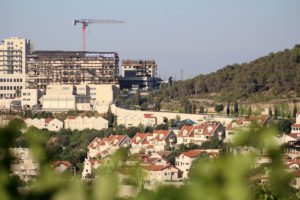writes in Mondoweiss
The Israeli government advanced plans for 4,948 new settlement units in the occupied Palestinian territory during planning meetings on October 14th and 15th, settlement watchdog Peace Now reported.
According to the group, the advancement of the plans by the Israeli Civil administration, make 2020 the “highest year on record in terms of units in settlement plans promoted since Peace Now began recording in 2012.”
It is possible, the group noted, that the Civil Administration’s Higher Planning Committee could convene again before the end of the year and advance even more settlement plans.
Peace Now said that of the 4,948 units, 2,260 were approved for deposit (the first major stage of development) and 2,688 were approved for validation (the second and often final major stage of development).
The group noted that all of the new units except for two were approved in areas that Israel would have to evacuate in the case of a two-state solution that adheres to the borders drawn in the Geneva Initiative.
Palestinian villages under threat
Among the plans that were advanced were hundreds of illegal settler outposts that were retroactively recognized and approved. Israeli outposts, which unlike settlements are built without initial government approval, are considered illegal under Israeli law itself, but are frequently “retroactively legalized” by the government in proceedings such as this one.
Peace Now also noted that the plans included 560 units in the Har Gilo settlement, which was built on the lands of al-Walaja village and lies in the hills between Bethlehem and Jerusalem.
The new “neighborhood” in Har Gilo, Peace Now notes, would actually be larger than Har Gilo itself, and would effectively further isolate al-Walaja from the surrounding village of Battir, and Battir from Bethlehem city.
Not only are the lands in question central to Palestinian life in the Bethlehem area, with many residents enjoying hikes and nature trails between Bethlehem, Battir, and al-Walaja for decades, the land also “constitutes some of the only uninhabited fertile land reserves for Bethlehem, which currently is cut off by the West Bank barrier to its immediate north and west,” Peace Now says.

